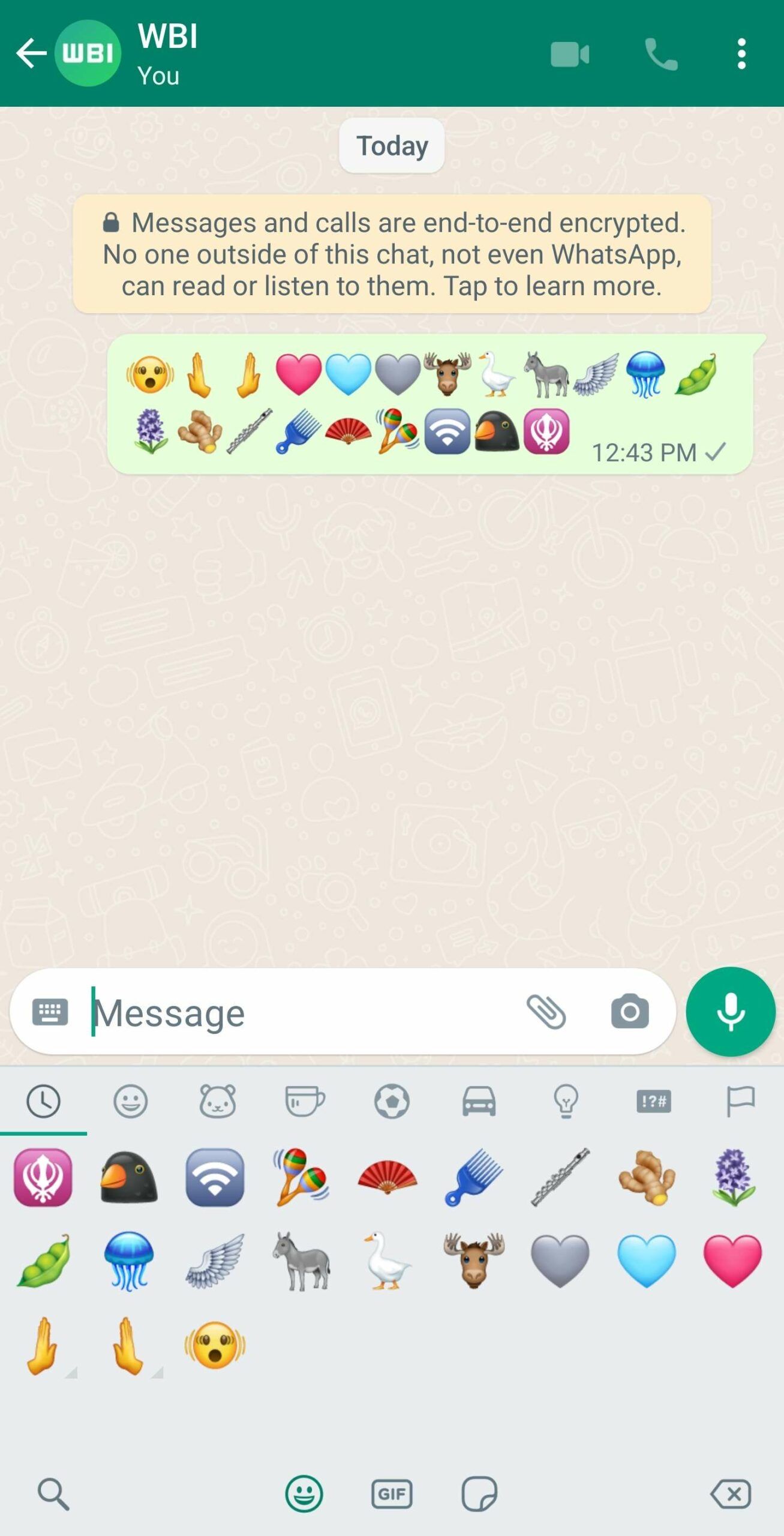WhatsApp has been around for a while and continues to rank among the best social apps out there. The Meta-owned platform's feature set is rapidly expanding, too, with the decent success of Communities and the imminent release of Newsetters. We're now getting info on some new emoji popping up on the WhatsApp beta for Android version 2.23.5.13. We first learned about the feature's arrival back in December.
However, the visibility may differ from person to person, with WABetaInfo noting that the new emoji are visible for some testers running the preceding 2.23.5.12 beta. If available, users should be able to access the new emoji directly from the WhatsApp keyboard. The 21 new emoji are part of the Unicode 15.0 specification, released in September.
The rollout of the new set of emoji directly within WhatsApp puts an end to users resorting to alternate keyboards to achieve the same goal. The cluster is still only visible to those signed up for the beta version of the app, but its arrival on the stable channel shouldn't be far away. If you're subscribed to the Google Play Beta Program for WhatsApp, chances are that the 21 new emoji have already appeared for you.

Operating system maintainers are meant to support Unicode symbols by making sure they have designs for them as they're called for. Some apps including Facebook, Twitter, and WhatsApp also design their own Unicode-compliant emoji as a way to make sure their users are able to use new symbols with each other regardless of when software updates bring them along. However, because the apps and OSs all update at different times, there's bound to be a gap where some phones might support the new symbols sooner than the apps do — a new emoji that appears for one device on one app may not appear on another device using the same app. Alas, this is how it goes in a market economy of software. Expect a repeat for the minor Unicode 15.1 update this year.
Meanwhile, we recently learned about another WhatsApp feature making its way to the app — self-destructing group chats. Spotted on both iOS and Android versions of the app, this would basically work in the same way as a number of self-destruct options already available, but apply to an entire group. Screenshots revealed that it would be called expiring groups and be accessible from the group's settings.

